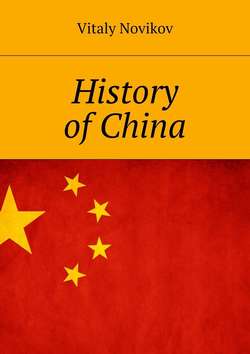Читать книгу History of China - Vitaly Novikov - Страница 6
Jan go.
ОглавлениеThe period from 481 (or 403) of the year 221 BC is called Jan go, which means «the warring kingdoms». This period was dominated by the «seven strongest States» – Chu, Qin, Wei, Zhao, Han, Qi and Yan. On the Northern borders of the kingdoms of Qin, Zhao and Yan to repel attacks by nomads were built walls, which later became parts of the great wall. The Chinese at this time have made great strides in creating the irrigation system. There were the canals preserved to our days. Sometimes the lack of coordination between people involved in the construction of dams and the digging of canals in various States, has led to flooding and flooding of the territories whose interests were not taken into account. With the development of trade increases the production of metallic money. The money had different forms. Each state usually had its original form of a coin. The coins were in the form of swords, knives, shovels, rounds with a square hole inside. Usury had appeared. Free farmers, caught in bondage usurers, often lost their lands and freedom. Slavery was of two types private and public. State slaves were usually criminals. Some slave-owners had several thousand slaves.
In 6—5 centuries BC, Lao-Tzu develops the philosophy of Taoism. Lao-Tzu denounced luxury and wealth. His ideal was a return to the primitive community. His philosophy was against to fight the higher classes of society. He adhered to the «theory of omission». Kun—Tzu (Confucius), who lived in 6—5 centuries BC, the preacher of the Kingdom of Lou, was a supporter of observance of the ancient rites, ceremonies and worship of ancestors. According to his theory, every person needs to be in his place: the king must be a king, craftsman must be craftsman, artisan must be artisan and farmer must be farmer. Later the «school of legists» – «fazza» appeared. The ideologists of this direction were Shang Yang (4th century BC) and Han FEI (3rd century BC). They advocated reforms in the political system. Their ideal was a strong bureaucratic state. All of these ideological and philosophical movements represented the interests of the property classes. In the higher strata of Chinese society began the struggle of the ideologies of Confucianism and legalists «fazza». In the end direction «fazza» won with his idea of «a strong power and weak people». This course was taken in the unenlightened the Kingdom of Qin. During Xiao Gong reign in the Kingdom of Qin in the 361—338 the years there have been significant administrative, fiscal and military reforms that strengthened the state. Qin is beginning an expansion in the neighboring major States, conquering parts of their lands, and eventually became the largest and the only strong state.
